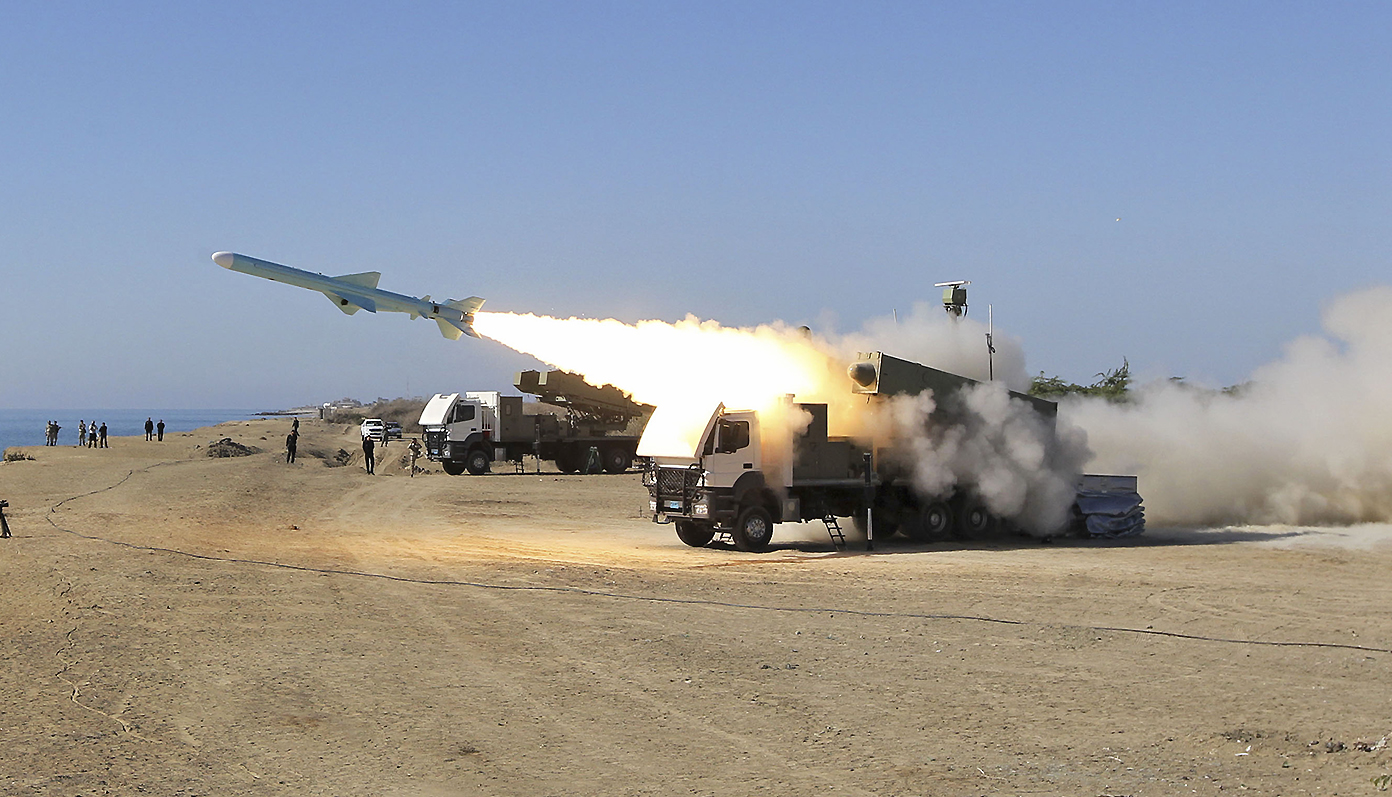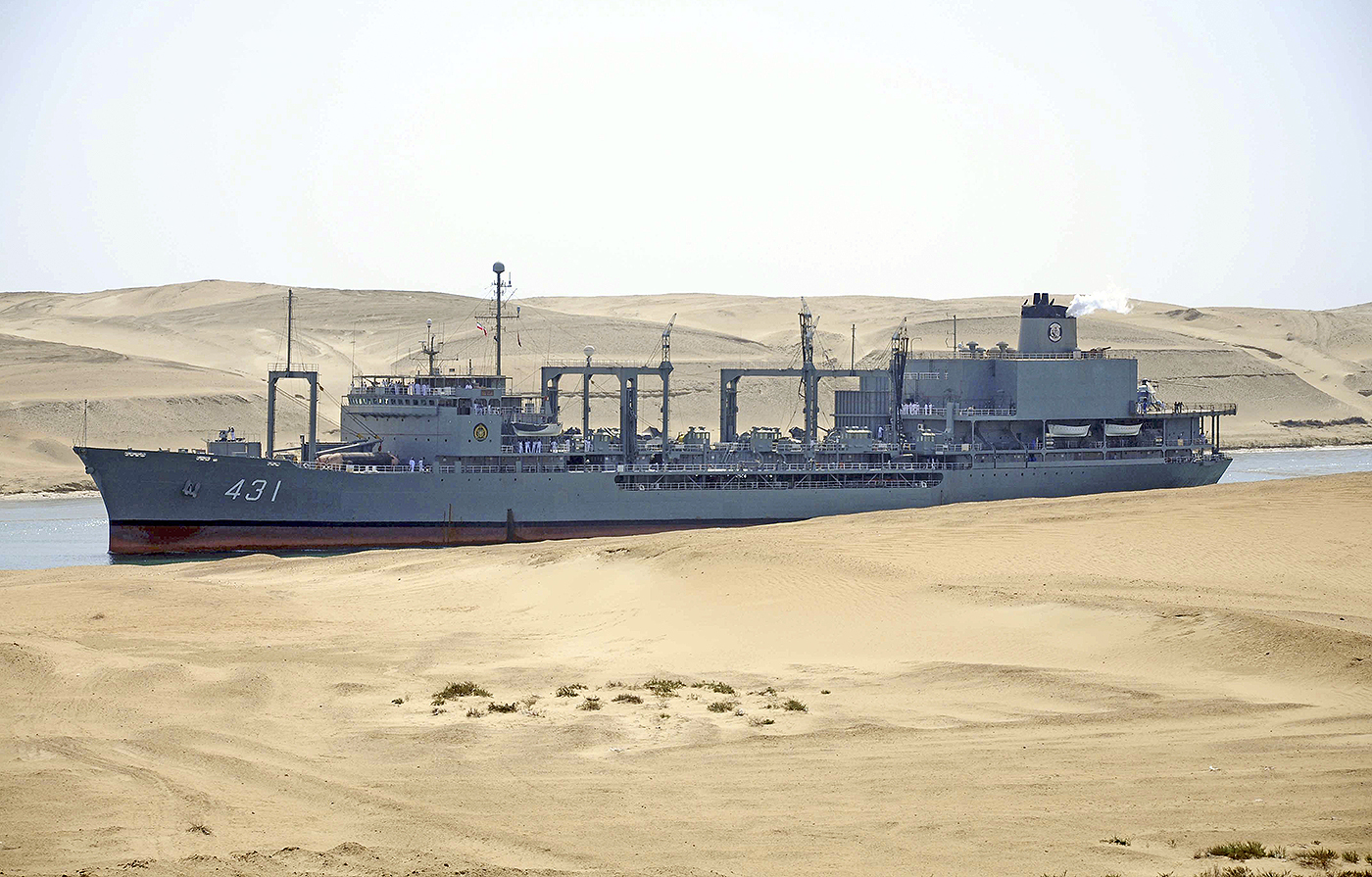As the Middle East continues to morph in ways previously unrealized, Iran may be aiming to increase its military reach drastically. Iranian proxies—such as Hezbollah in Lebanon and more recently Houthi rebels in Yemen—have extended Iran’s military influence abroad. Yet the strategic utility of these groups alone pales in comparison to that provided by actually having military outposts in the regions where they operate. In other words, when you pair a regular military asset like a naval base with these irregular proxy elements, the sum is greater than their parts. Not just that, but persistently holding a military presence far from Iranian shores opens up a new set of tactical and strategic possibilities. Now it looks as if Tehran has come to the same conclusion and is now actively mulling over the possibility of doing just that–establishing naval bases in or very near Syria and Yemen.
General Mohammad Hossein Bagheri, Iran’s top general, told the semi-state ran Tasnim news agency the following:
“Maybe, at some point we will need bases on the shores of Yemen and Syria.” Bagheri went on to compare doing so with a nuclear program, saying that “having naval bases in remote distances is not less than nuclear power… It is ten times more important and creates deterrence.”
The general also described the possibility of doing this, at least partially, by using sea basing platforms which require virtually no in-situ infrastructure in the countries near where they deploy.

Setting up basing in or near Yemen or Syria would not just signal a drastic shift in Iran’s military posture, but it could also greatly complicate interdiction efforts that attempt to keep arms—especially high-end ones—out of the hands of Iranian-backed non-state actors.
If Iran were to set up naval bases in Syria they would be able to more reliably supply Hezbollah fighters operating in Lebanon and actively fighting for the Assad regime in Syria’s ever more internationalized civil war. Hezbollah is known to already have higher-end weaponry, and they’ve used anti-ship missiles successfully in the past. Were there another major entanglement with Israel, it’s feared Hezbollah would put these weapons to use, greatly increasing the volatility of such a conflict.
We know all too well that Iranian-backed Houthi rebels have been armed with weaponry traditionally under the control of state actors—namely anti-ship missiles. Those missiles have destroyed one UAE flagged vessel and were fired multiple times at US vessels patrolling the area. Currently these missiles and other war materials are smuggled ashore. If Iran were to set up a naval base in Yemen it would not only create a direct supply route for resupplying Houthi fighters in the western part of the country but it would also drastically complicate an already very complicated conflict.

Doing so may also be a sign of a greater overall strategy, one that the general loosely alludes to. Iran is aware of the strategic value of the Mandeb Strait, especially when it comes to international commerce, just as they have long understood the value of the Strait of Hormuz in the Persian Gulf. Being able to quickly close this naval corridor—via mines and/or the threat of anti-ship missile and small boat attack—would give Iran great leverage far from its own shores. This is a strategy we discussed in-depth just as the Yemeni civil war became largely internationalized a couple years ago.
Saudi Arabia, who is leading the fight against Iran’s Houthi-rebels in Yemen, would be especially vulnerable to the closing of both the Strait of Hormuz and the Mandeb Strait via Iranian military action, or that of its proxies. It would cut off the Kingdom’s ability to supply oil to the eastern hemisphere. If Iran had a naval base in Syria, giving them persistent access to the Eastern Mediterranean, they could threaten Saudi oil exports that are pumped via pipeline to terminals in the Red Sea that then travel through the Suez Canal to customers in the western hemisphere. Doing so, in combination with actions in the Strait of Hormuz and Mandeb Strait, would effectively shut down all Saudi energy exports and the Kingdom’s cash flow.
Although such tactics would likely lead to a much wider war, their greatest utility would be just as the general said, as a deterrent. As such, this scenario would be something Sunni Arab gulf states, and especially Saudi Arabia, would have to factor carefully before attacking Iran. In other words, the ability to even threaten the whole of Saudi Arabia and other oil producing Arab nations’ energy exports, even if just for a limited amount of time, is a bewildering possibility for Saudi Arabia and its allies to grapple with and could provide Iran with some level of additional deterrence against future aggression by the ever more heavily armed Sunni gulf states.

Iranian naval bases in the eastern Med and/or near the Horn of Africa would be a direct challenge to the US and its allies who are already firmly entrenched militarily in both regions. Today, NATO aligned European countries wield military dominance in the eastern Mediterranean, along with Israel, all of which would not be comforted by the idea of Tehran setting up shop in their backyard.
In the Gulf of Aden, the US has had an ever increasing presence at Camp Lemonnier in Djibouti since shortly after 9-11. Having the Iranians install a naval base nearby would likely lead to a rapid buildup of military capabilities in the region by both parties, and others as well.
When it comes to Syria, it is possible that Tehran’s ever closer strategic partner, Russia, could offer naval base in Tartus, Syria up for the Iranian Navy’s continuous use. Iran has opened its air bases up to Russian combat aircraft, so allowing the Iranians to have a presence in Tartus seems like something that is more probable than just possible. This is especially true considering Russia now basically owns the vast majority of the port, as opposed to the smaller portion of it they leased from the Syrian government for decades.
Finally, the fact that the general notes the possibility of using some sort of off-shore sea base concept—at least initially—to set up a continuous naval presence abroad is intriguing. Iran understands gas and oil platforms very well, they also understand littoral combat operations equally as well as their native environment has dictated as much. Putting the two together—to some degree at least—in an expeditionary manner makes a lot of sense.
The truth is that Iranian warships have ventured farther and farther from their home turf in recent years and the Iranians definitely have had an interest in expanding their naval sphere of influence long before the general’s recent statements. And clearly Iran has kept a close watch on America’s use of sea bases in the Persian Gulf over the last 30 years. They have also likely kept a keen eye on the giant leaps in capability the US Navy has made in recent years involving the concept, building massive purpose-built floating forward staging bases and logistical arteries. Even US Special Operations Command has their own sea base under construction which will be a far cry from the austere barges used during the Tanker Wars of the 1980s.

With all this in mind, we could see Iran deploy a similar strategy in the near term, and even naval ports abroad in the longer-term. The question then is what would or could the US and its allies do about it?
The answer to that question, at least from the Iranian’s point of view, could likely be “not much,” at least if Russia’s and China’s extra-territorial expansion efforts are any indication. Yet assuming that the US would not intervene, or at least try to, may be a misjudgement as America has always exercised a far heavier hand with Iran than its rival nuclear-armed military competitors Russia and China.
Setting up a mobile sea base will be a higher-risk, but lower-cost endeavor for Iran. It may be more flexible and far cheaper, but it will not have the same protections and cache that having an actual port in a host country could offer. Still, the barriers to entry are lower with a mobile sea base than installing a naval base, and Iran definitely has the money to construct one of these platforms following the execution of the P5+1 nuclear deal that saw billions in Iranian funds unfrozen.
We’ll have to wait and see if Iran moves forward with some or any of these strategies, but considering their expanded influence on the ground abroad, it is likely only a matter of time till a similar strategy manifests itself in the naval realm.
Contact the author Tyler@thedrive.com
